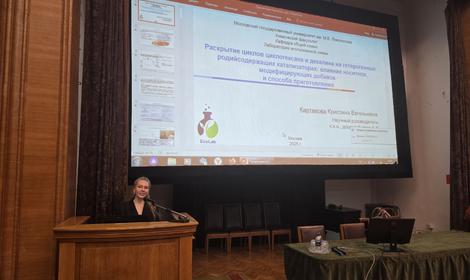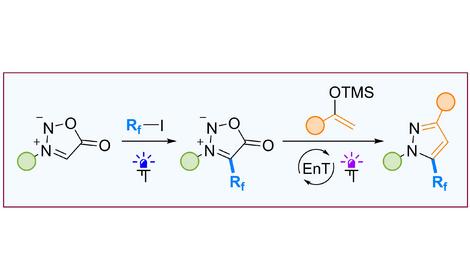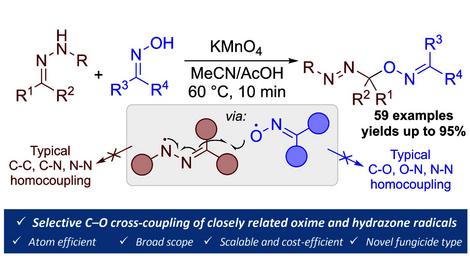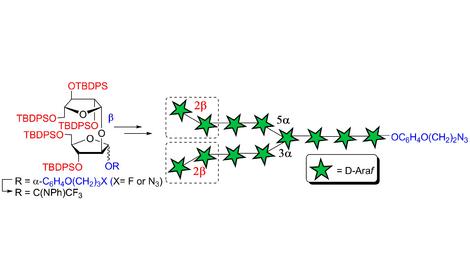Лаборатория полисераазотистых гетероциклических соединений (№ 31)
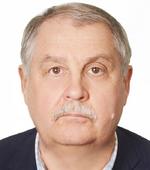
ORCID: 0000-0001-6609-4087
Researcher ID: D-7530-2014
h-index = 30
- Синтез и химические свойства новых полисера- и сераазотистых гетероциклических систем.
- Создание на основе халькогеназотистых гетероциклов компонентов органических солнечных элементов, светодиодов, полупроводников, нелинейных оптических и жидкокристаллических материалов.
- Разработка методов получения производных гетероциклов, содержащих несколько атомов серы.
- Создание на основе сера(селен)-азотных гетероциклических тиазильных радикалов, катион- и анион-радикалов новых магнитных, магнитно-бистабильных, электропроводящих и сверхпроводящих функциональных материалов.
Нефуллереновые акцепторы и создание солнечных ячеек с объемным гетеропереходом с повышенной фотовольтаической эффективностью.
✓ Сотрудниками ИОХ РАН разработан эффективный метод синтеза новой электронодефицитной гетероциклической системы, дитиенобензо-бис-тиадиазола, на основе которого совместно с китайскими партнёрами из Нанкайского университета синтезированы полимерные доноры – важнейшие компоненты активного слоя органических солнечных элементов. Показано, что полимеры не только обладают широкой оптической запрещенной зоной, превышающей 2.0 эВ, но и демонстрируют глубоко расположенные уровни энергии наивысшей занятой молекулярной орбитали. На основе синтезированных донорных полимеров и коммерчески доступного нефуллеренового акцептора L8-BO-X сконструированы бинарные солнечные ячейки, одна из которых показала высокое значение фотовольтаической эффективности 16.34%, что говорит о перспективности этого семейства полимерных доноров.
В 2025 году опубликована статья в престижном журнале 1 квартиля J. Mater. Chem. C., DOI: 10.1039/D5TC01406A
✓ Сотрудниками ИОХ РАН совместно с китайскими партнёрами из Нанкайского университета посредством стратегии циклоароматизации по реакции Хинсберга был разработан новый синтетический подход к построению полиароматических конденсированных структур как компонентов нефуллереновых акцепторов для органических солнечных элементов. Полученные нефуллереновые акцепторы CD-1 и CD-2 демонстрируют компактную трехмерную взаимопроникающую сетчатую структуру с высоким коэффициентом упаковки в монокристалле и, следовательно, высокую способность к переносу электронов, о чем свидетельствует высокая подвижность электронов более 1.1 см2 V-1 s-1 в органических полевых транзисторах на основе CD-2. Примечательно, что бинарные органические солнечные ячейки без добавок на основе CD-1 и CD-2 продемонстрировали близкую к рекордным фотовольтаическую эффективность (КПД) 19.6% и 19.1%, соответственно, с хорошо сбалансированным напряжением холостого хода и плотностью тока короткого замыкания. Эти результаты подчеркивают потенциал новой стратегии молекулярного дизайна для разработки высокопроизводительных нефуллереновых акцепторов.
В 2025 году опубликована статья в высокорейтинговом журнале 1 квартиля Energy & Environmental Science, DOI: 10.1039/D5EE00031A.
✓ Сотрудниками ИОХ РАН разработаны мягкие условия для получения 3-тиозамещенных 9-оксо-1-гетарил-9H-индено[2,1-c]пиридин-4-карбонитрилов с количественными выходами в реакции легкодоступного 2-(3-оксо-2-арилиден-2,3-дигидро-1H-инден-1-илиден)малононитрила с S-нуклеофилами. Разработанная методика оказалась более простой и эффективной по сравнению с известными методами синтеза 3-аминозамещенных 9-оксо-1-гетарил-9H-индено[2,1-c]пиридин-4-карбонитрилов в двухстадийном подходе. Показана возможность применения синтезированных тиозамещенных 2-азафлуоренонов в качестве терминальных групп в нефуллереновых акцепторах (НФА) для органических солнечных элементов. Были оценены ключевые характеристики новых НФА с функциональными концевыми группами и проведено сравнение с известными аналогами, описанными в литературе.
В 2025 году опубликована статья в высокорейтинговом журнале 2 квартиля Synthesis, DOI: 10.1055/a-2681-5727.
Создание новых высокоэффективных инфракрасных органических светодиодов
✓ Сотрудниками ИОХ РАН совместно с коллегами из ФИАН им. П.Н. Лебедева синтезированы несимметричные флуоресцентные соединения типа D–A–А на основе конденсированных 1,2,5-тиадиазолов с акцепторной цианогруппой, которые продемонстрировали флуоресценцию из скрученного состояния с внутримолекулярным переносом заряда (TICT) —фотохимический процесс, при котором электрон переносится с электронодонорной группы на электроноакцепторную, после чего происходит скручивание молекулярной структуры. Для получения этих молекул нами были найдены условия проведения нескольких последовательных реакций замещения двух атомов брома исходной молекулы цианированием и кросс-сочетанием по Сузуки-Мияуре. Полученные результаты показали, что введение в молекулу конденсированного 1,2,5-тиадиазола цианогруппы и карбазольного донорного фрагмента приводит в зависимости от положения атома азота во внутреннем акцепторном блоке к планаризации структуры в возбужденном состоянии из-за образования водородной связи N-H между азотом и водородом донорного блока, в результате чего спектр люминесценции претерпевает сильный батохромный сдвиг. Это открывает новые возможности для разработки высоколюминесцентных органических красителей для применения во флуоресцентных зондах, сенсорах и солнечных батареях.
В 2025 году опубликована статья в престижном журнале 1 квартиля “Dyes and Pigments”, DOI: 10.1016/j.dyepig.2025.112761..
✓ Сотрудниками ИОХ РАН было исследовано влияние тяжелых атомов (серы и селена) на фотофизические и электролюминесцентные свойства излучателей термоактивируемой замедленной флуоресценции (TADF) на основе β-дикетонов. Были синтезированы два новых красителя структуры D-π-A-π-D, содержащие донорные фрагменты фенотиазина (PTZPDO) и феноселеназина (PSeZPDO). Ab-initio квантово-химические расчеты (SA-CASSCF) показывают, что введение атомов серы и селена существенно влияет на электронную структуру и приводит к появлению различных спектров фотолюминесценции. Показано, что, хотя замещение тяжёлых атомов усиливает спин-орбитальное взаимодействие, оно также увеличивает синглет-триплетную энергетическую щель (ΔEST), снижая эффективность обратной интеркомбинационной конверсии и позволяя конкурировать между TADF и фосфоресценции триплетного состояния в плёнках, легированных PSeZPDO. Было установлено, что OLED-устройство на основе PTZPDO показало яркое излучение с максимальной яркостью 9800 кд/м², что превосходит устройство на основе PSeZPDO по эффективности излучения TADF. Эти результаты продемонстрировали высокий потенциал излучателей TADF на основе β-дикетонов с модификациями тяжёлых атомов для энергоэффективных OLED-приложений, и показали важность оптимизации молекулярной конструкции для баланса фотофизических характеристик устройства.
В 2025 году опубликована статья в престижном журнале “Optical Materials”, DOI: 10.1016/j.optmat.2025.117470.
Синтез новых электроноакцепторных строительных блоков для фотовольтаических и светоизлучающих устройств
✓ Сотрудниками ИОХ РАН совместно с коллегами из НИОХ РАН им Н.Н. Ворожцова и ФИАН РАН им. П.Н. Лебедева методами термогравиметрии/ дифференциальной сканирующей калориметрии, спектроэлектрохимии и оптической спектроскопии, циклической вольтамперометрии и электронного парамагнитного резонанса изучены нейтральные и ион-радикальные состояния конденсированных фенантро- и дибензохиноксалино-1,2,5-сера(селен)диазолов. Показано, что по сравнению с архетипическим 2,1,3-бензотиадиазолом, π-расширение и замена S на Se совместно приводят к увеличению адиабатического сродства к электрону, уменьшению абсолютных значений CV-потенциалов, уширению и батохромным сдвигам полос УФ-спектров. Полученные данные свидетельствуют о том, что изученные структуры являются перспективными органическими красителями/нефуллереновыми акцепторами электронов для молекулярной оптоэлектроники.
В 2025 году опубликована статья в престижном журнале “Dyes and Pigments”, DOI: 10.1016/j.dyepig.2025.112922.
Обзор по химии Херца
✓ С участием сотрудника ИОХ РАН проанализированы основные достижения химии Херца за ее первое столетие, а также проблемы и перспективы дальнейшего развития этой области. Обсуждение было сфокусировано на синтезе, строении и реакционной способности π-гетероциклов — производных (гет)арен-аннелированной 1,2,3-дихалькогеназольной системы с халькогенами S, Se и, реже, Te, в различных спиновых и зарядовых состояниях, охватывающих катионы, радикалы, биполярные ионы, и антиароматические/дирадикалоидные хиноиды. Эти соединения важны как для развития фундаментальной химии, так и для химии материалов, особенно для конструирования и синтеза безметальных электропроводящих, магнитных и оптоэлектронных материалов. Рассмотрено распространение химии Херца на другие непереходные элементы.
В 2025 году обзор опубликован в журнале «Успехи химии», DOI: 10.59761/RCR5146.
Центр по изготовлению и испытанию сенсибилизированных красителем солнечных ячеек
✓ Сотрудники лаборатории №31 ИОХ РАН с привлечением приборной базы ИОХ РАН конструируют опытные образцы сенсибилизированных красителем солнечных ячеек на основе как новых веществ, полученных в лаборатории, так и коммерчески доступных красителей. Для создания солнечных ячеек сотрудники располагают приборной базой, включающей в себя УЗ- и УФ-очистители рабочей поверхности электродов, трафареты для нанесения полупроводниковых слоев методом doctor-blade, программируемые муфельные печи, вакуумную установку для инжекции электролита в заготовку и другую необходимую аппаратуру. Тестирование полученных устройств производится с помощью современного прибора для измерения фотовольтаической эффективности солнечных ячеек фирмы Sciencetech (Канада) с сертифицированным источником излучения AM 1.5G со световым потоком 100 mW cm-2 и потенциостатом Keithley 2400.












